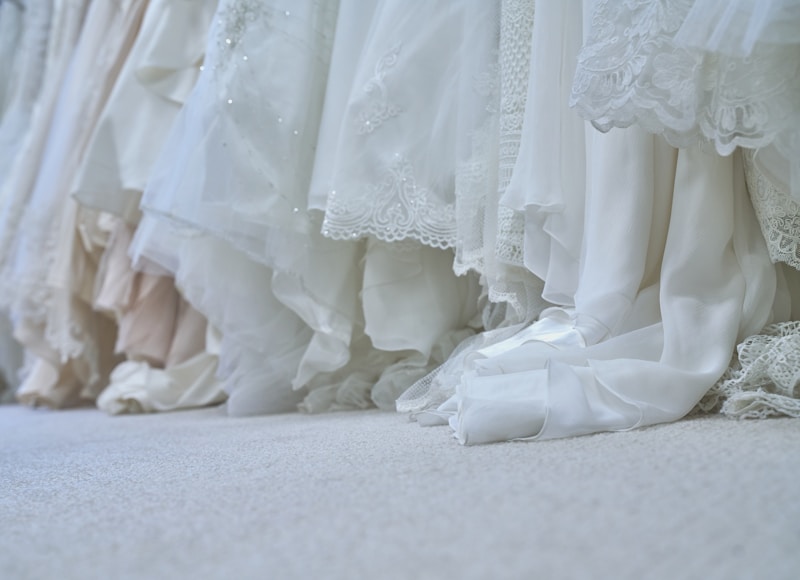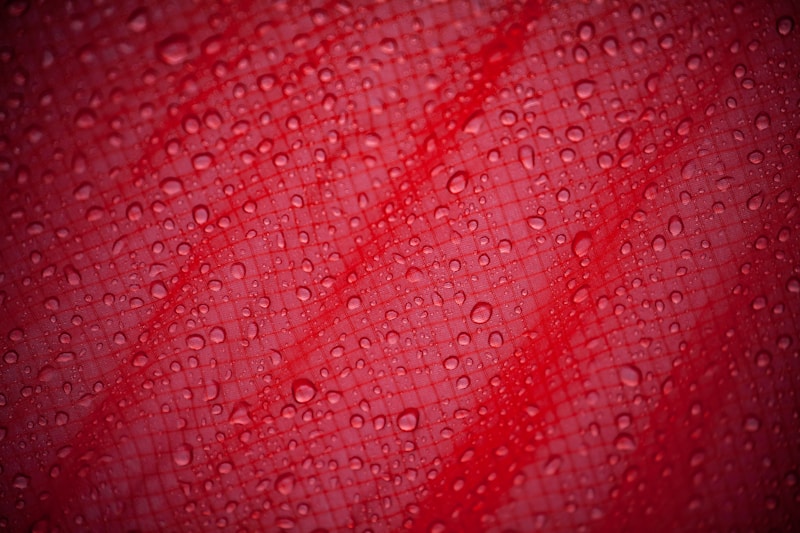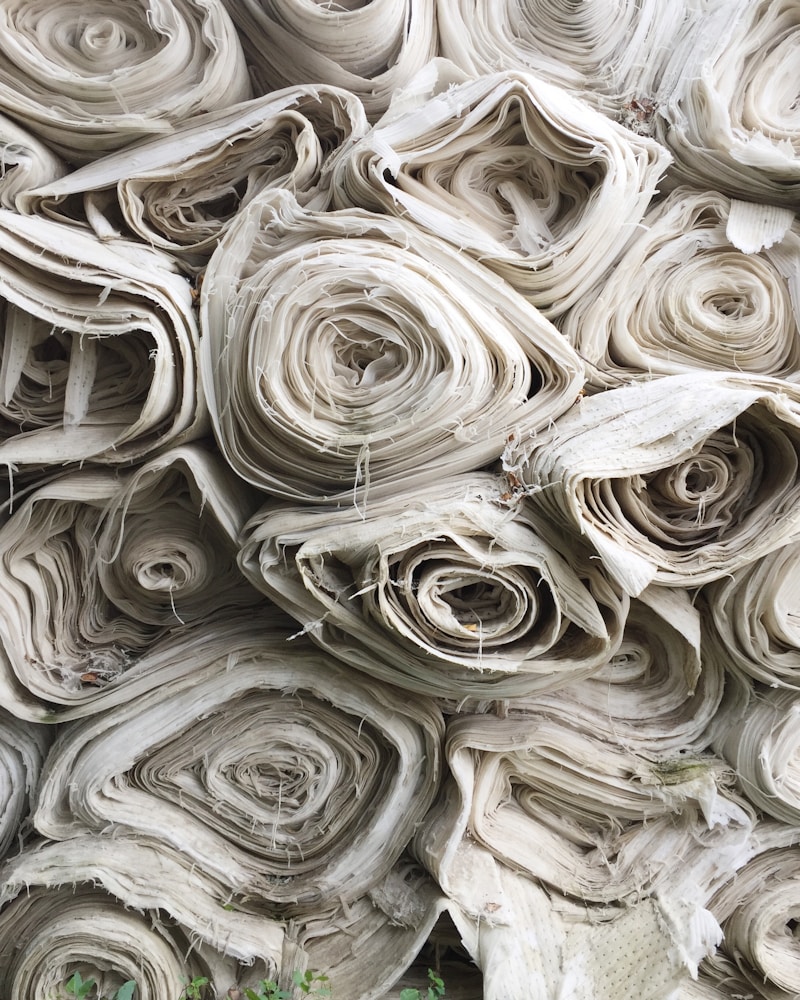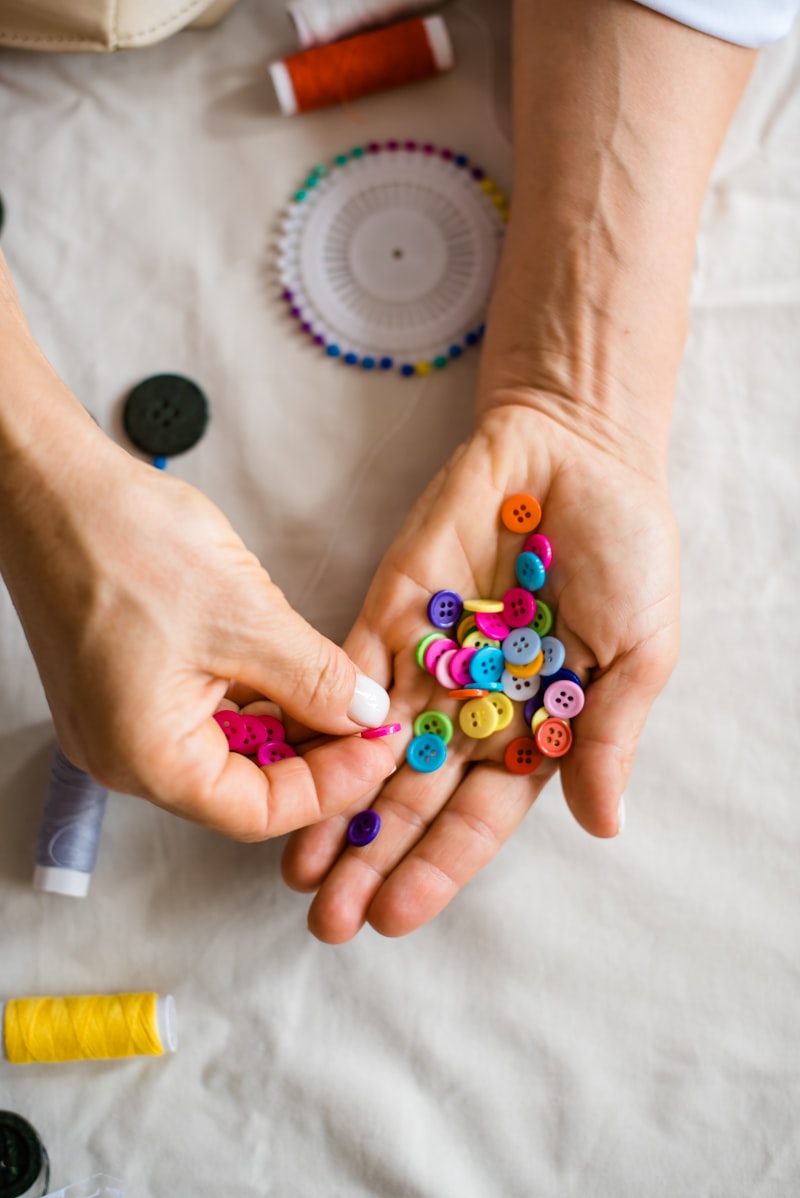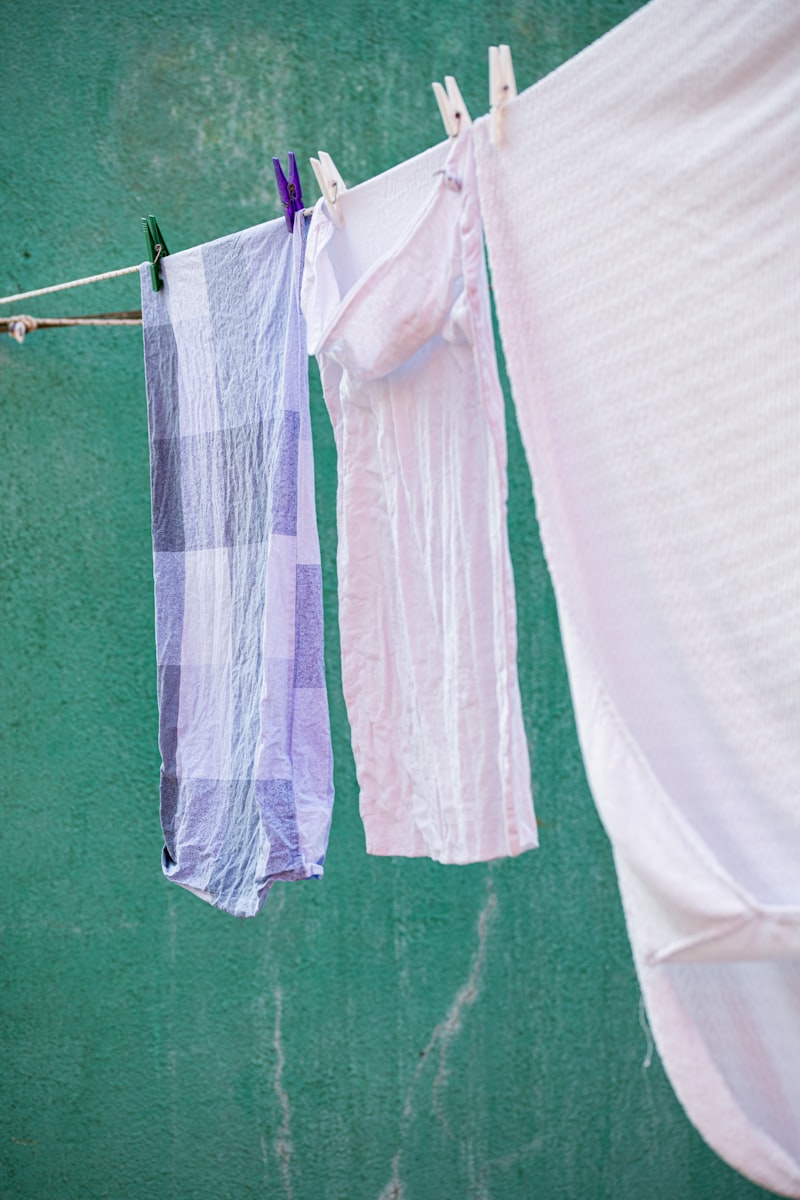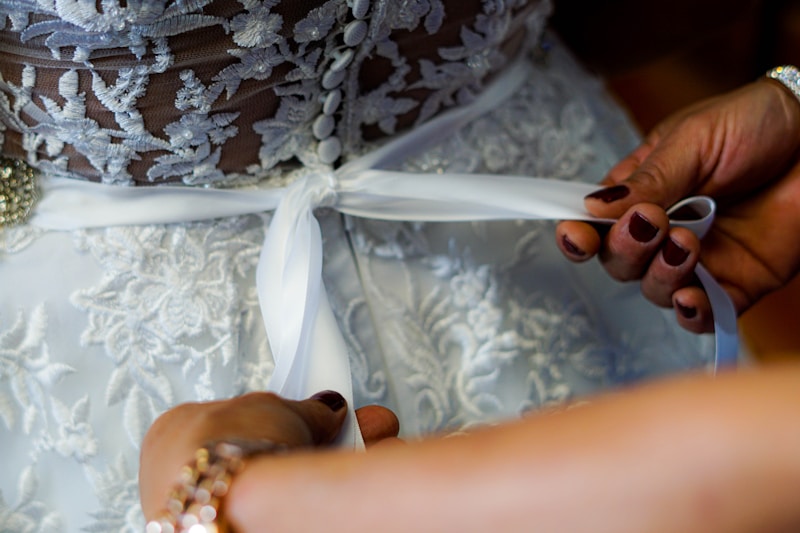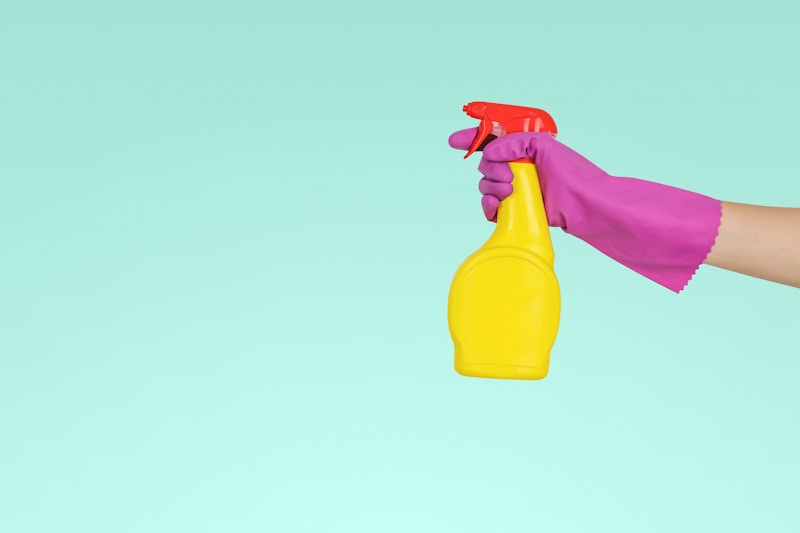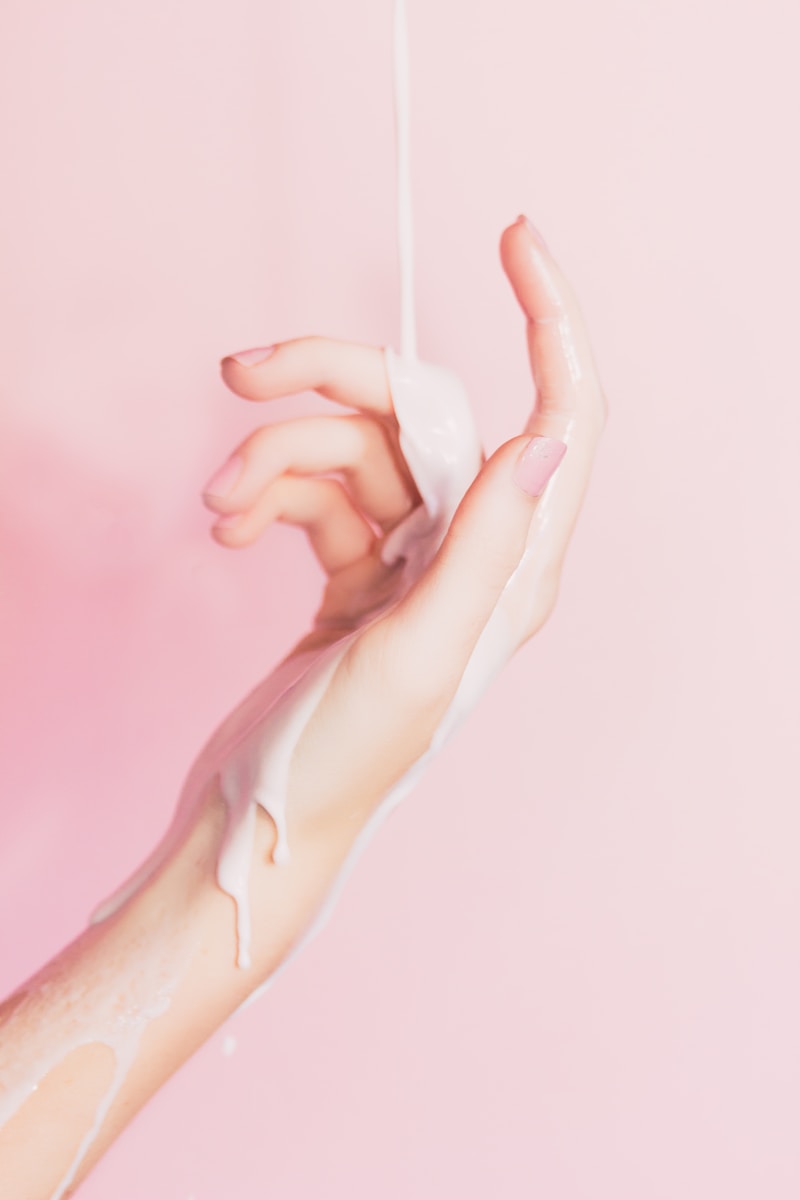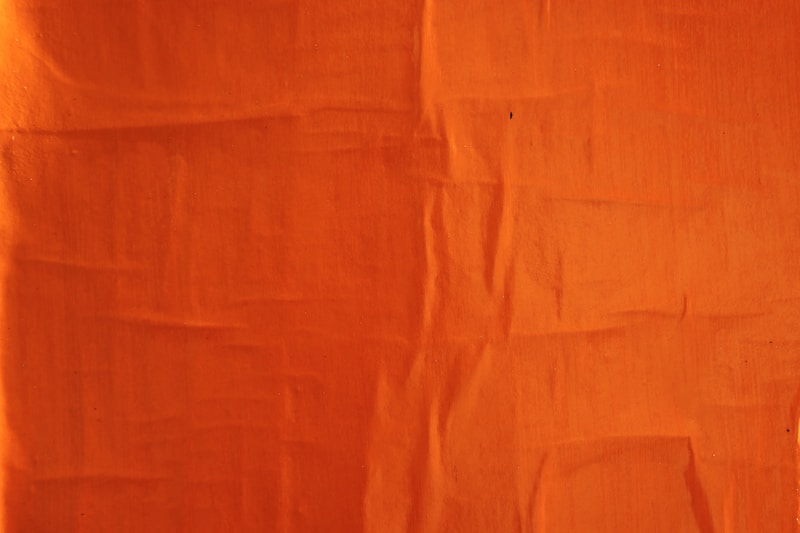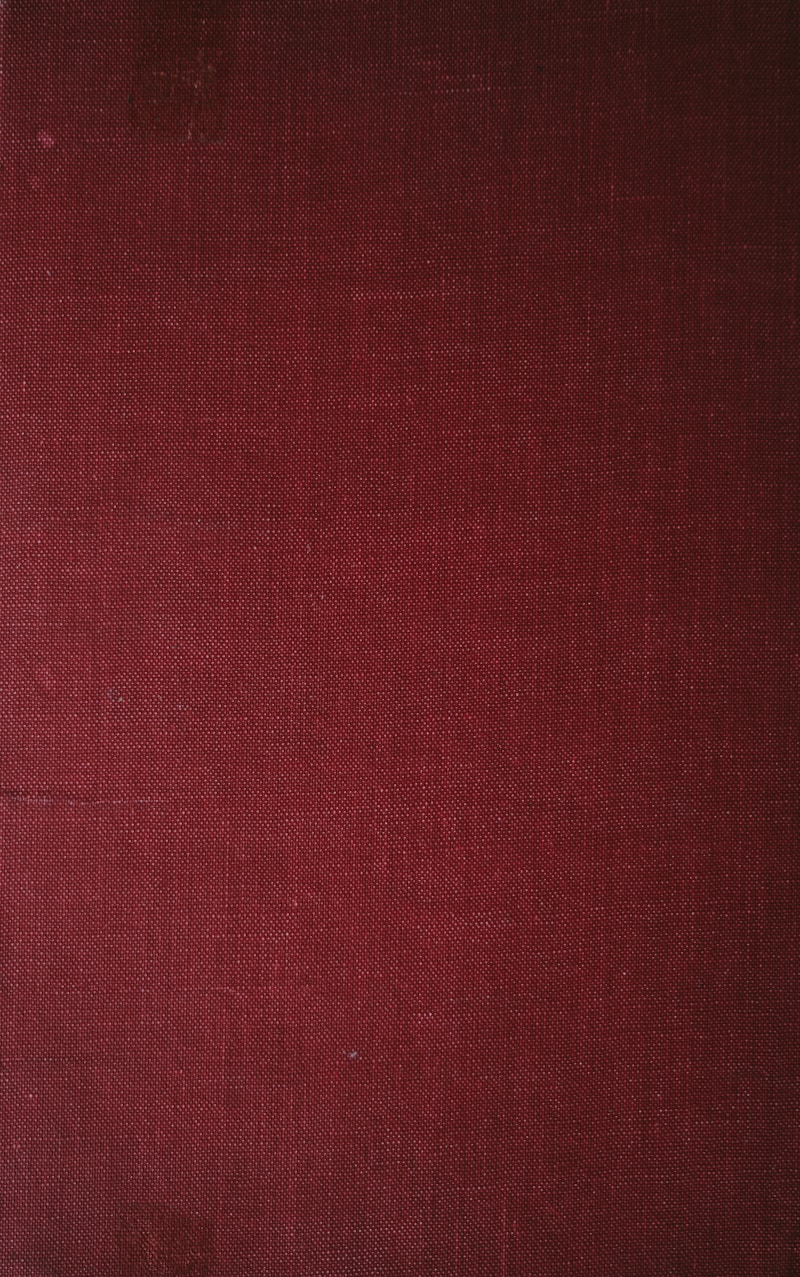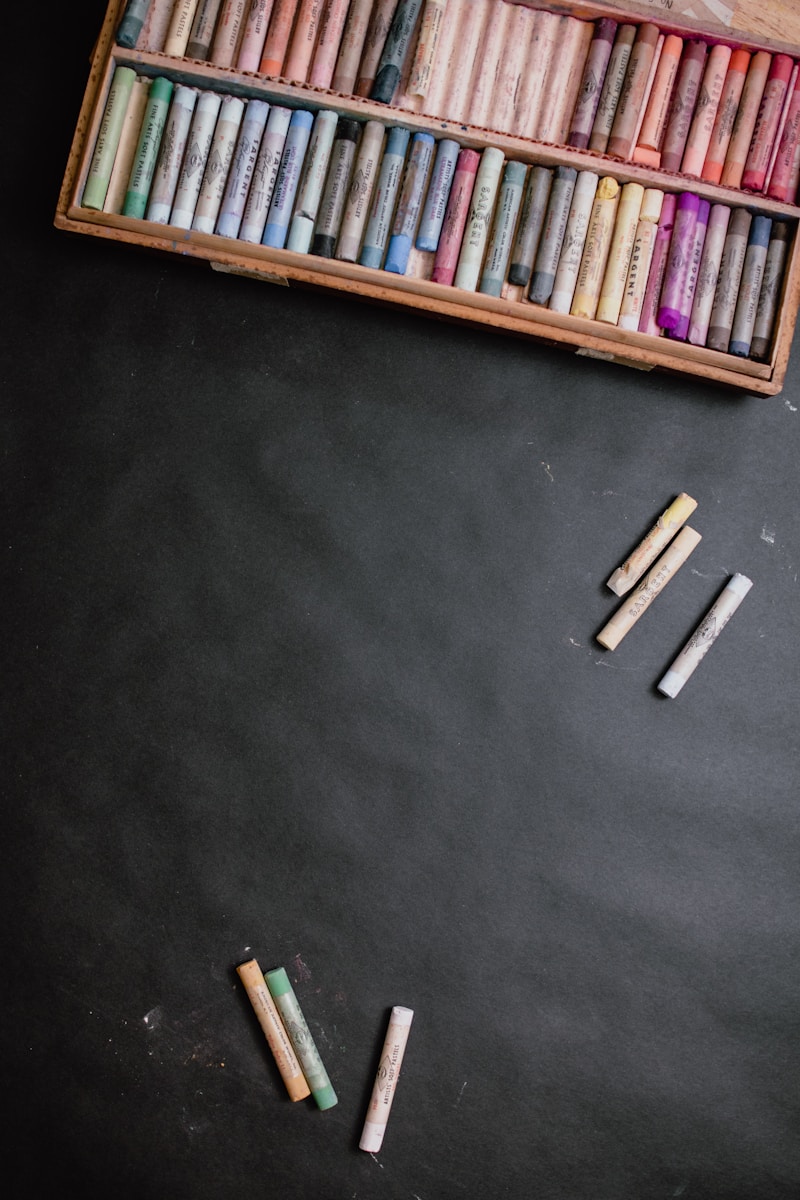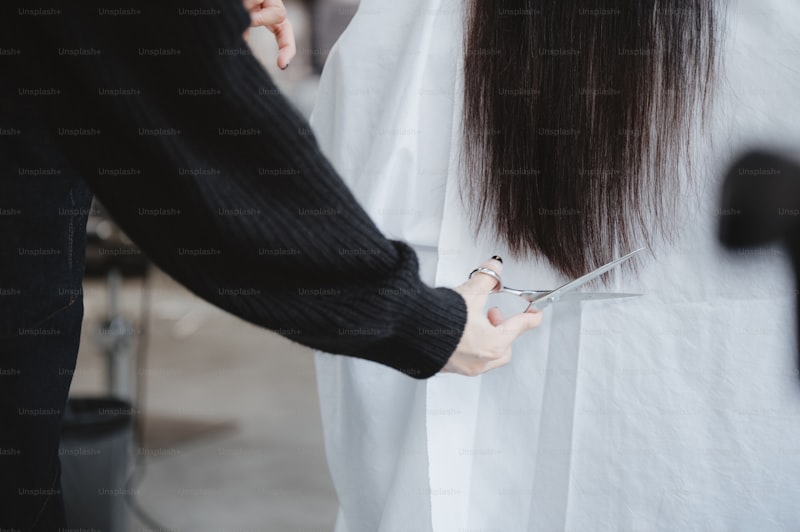How to Safely Spot Clean Wedding Dresses: A Comprehensive Guide
Wedding dresses hold immense sentimental value, often passed down through generations or reserved for that special day. However, after the celebration, it's not uncommon for these delicate garments to acquire stains. Knowing how to safely spot clean your wedding dress is essential to preserve its beauty and integrity. In this article, we will explore effective methods, tips, and precautions for maintaining that pristine condition.Understanding the Fabric of Your Wedding DressBefore diving into cleaning methods, it’s crucial to understand the fabric of your wedding dress. Different fabrics require specific care techniques:Fabric TypeCleaning MethodNotesSatinUse a damp cloth and mild detergent.Avoid rubbing too hard to prevent damage.LaceSoak in cold water with gentle cleanser.Handle with care to avoid tearing.TulleSpot clean with a fabric-safe stain remover.Check for colorfastness before applying any products.OrganzaUse steam to remove wrinkles and dirt.Always test on a small inconspicuous area first.Common Stains on Wedding DressesUnderstanding the types of stains you may encounter will help you prepare for spot cleaning. Here are some common stains:Red Wine: This can leave a noticeable mark on light-colored fabrics.Makeup: Foundation and lipstick can be tricky to remove, especially from lace.Grass: Often found on the hem, this green stain can be stubborn.Food: From cake to dinner spills, food stains are common but manageable.Preparing for Spot CleaningBefore starting the cle...
Essential Stain Removal Tips for Delicate Fabrics
When it comes to caring for delicate fabrics, effective stain removal can often seem daunting. Delicate materials like silk, linen, and lace require special attention and finesse. The right approach not only preserves the fabric's quality but also ensures the longevity of your garments. In this article, we will explore various stain removal tips specifically tailored for delicate fabrics, helping you tackle any unwanted marks with ease.Understanding Delicate FabricsBefore diving into stain removal strategies, it’s crucial to understand what constitutes delicate fabrics. These fabrics, such as silk, chiffon, lace, and fine wool, are typically lightweight and may be prone to damage when exposed to harsh treatments. Therefore, using gentle cleaning methods is imperative. Here are some characteristics of delicate fabrics that make them unique:Fabric TypeCharacteristicsSilkSoft, smooth, luxurious, prone to water stainsLaceDelicate, intricate designs, easily torn or snaggedChiffonLightweight, sheer, sensitive to heatGeorgetteFluid, slightly crinkled texture, can lose shape easilyCommon Types of Stains on Delicate FabricsStains can occur in various forms, and understanding their types can assist in formulating effective removal strategies. Here are some common culprits:Grease Stains: Often from food or oil-based products.Wine Stains: Liquid spills that can leave disastrous marks if not treated promptly.Ink Stains: Accidental smudges from pens or markers.Blood Stains: Can be particul...
Understanding Fabric Care Labels on Bridal Gowns: A Comprehensive Guide
When it comes to selecting the perfect bridal gown, understanding fabric care labels is essential for maintaining the beauty and longevity of your dress. This article provides you with in-depth knowledge about reading and interpreting these labels in order to keep your gown looking pristine on your special day and beyond.Why Are Fabric Care Labels Important?Fabric care labels are crucial for brides for several reasons. First, they provide instructions on how to clean and maintain the gown, ensuring that the dress remains in excellent condition. Second, knowing the specific fabric composition helps you avoid any mishaps during cleaning. Finally, understanding these labels can save you time, effort, and money in the long run.Components of a Fabric Care LabelUnderstanding fabric care labels can be straightforward if you know what to look for. Here are the key components commonly found on these labels:SymbolMeaningWashingInstructions on how to wash the gown: machine wash, hand wash, or dry clean only.BleachingIndicates whether bleaching is allowed.DryingInstructions on how to dry the gown: tumble dry, line dry, or hang dry.IroningGuidance on what heat settings to use while ironing.Professional CareRecommendations for professional cleaning services.Understanding Each SymbolFabric care labels use a universal set of symbols. Here's a quick rundown of what each symbol means:Washing: A tub symbol indicates machine washing, while a hand in water symbolizes hand washing.Bleaching: A tri...
Essential Guide to Handling Beadwork During Dress Cleaning
Introduction to Beadwork CareWhen it comes to cleaning dresses adorned with intricate beadwork, it’s imperative to understand the best practices to preserve the aesthetic and integrity of the garment. Beadwork can elevate the beauty of a dress, but it also requires meticulous care during cleaning to prevent damage. In this guide, we will explore effective methods for handling beadwork during dress cleaning, potential challenges, and additional tips. The following sections will serve as a comprehensive resource for anyone looking to properly maintain their beaded garments.Understanding Beadwork MaterialsCleaning beaded dresses starts with understanding the types of materials used. Beads can be made from a variety of substances including:MaterialPropertiesGlass BeadsDurable but sensitive to temperature changesPlastic BeadsLightweight but can discolorMetal BeadsSturdy but prone to rustWooden BeadsEco-friendly but may absorb moistureUnderstanding these properties will help determine the most suitable cleaning methods.Pre-Cleaning InspectionBefore initiating the cleaning process, it is necessary to conduct a thorough inspection of the garment. Look for:Loose beads or sequinsVisible stainsTypes of fabrics usedIf you notice any loose beadwork, it is advisable to stitch them back securely to avoid further damage during cleaning. For visible stains, take note of the type of stain (e.g., food, oil, or dirt) as this will influence your cleaning method.Methods for Cleaning BeadworkThere ...
Choosing the Right Detergent for Silk and Satin: Your Ultimate Guide
When it comes to caring for luxurious fabrics like silk and satin, choosing the right detergent is crucial. These delicate materials require special attention to maintain their texture and sheen. In this article, we will explore the best practices for selecting detergents specifically tailored for silk and satin, helping you keep your garments looking their best.Why Does the Type of Detergent Matter?Silk and satin are known for their softness and luxurious feel, making them popular choices for clothing and home textiles. However, they are also susceptible to damage from harsh chemicals found in many conventional detergents. Using the wrong detergent can lead to fading, loss of sheen, and even fabric deterioration. Therefore, picking the right detergent is essential for preserving the integrity of these delicate fabrics.What to Look for in a Detergent for Silk and SatinWhen choosing a detergent for silk and satin, consider the following factors: pH Balance: Look for a detergent with a neutral pH level to avoid damaging the fibers. Gentleness: Opt for gentle formulations that are free from harsh enzymes and bleach. Concentration: Highly concentrated detergents often clean better in smaller amounts, making them more economical. Fragrance: If you’re sensitive to smells, choose unscented or mildly scented options to prevent any reactions.Recommendation Table: Best Detergents for Silk and SatinBrandKey FeaturesPrice RangeWooliteSpecially formulated for delicates$10 - $15Le Blan...
Ultimate Guide to Maintaining the Shine of Satin Wedding Dresses
Weddings are a celebration of love, and for many brides, their wedding dress is the centerpiece of this special day. Among the various materials available, satin wedding dresses stand out for their luxurious sheen and elegant design. However, maintaining the shine of satin wedding dresses can be a daunting task, especially after the wedding day. In this article, we will explore effective techniques and important tips to keep your satin dress looking as radiant as it did on your big day.Understanding Satin FabricSatin is a weave that creates a smooth, glossy surface, making it a popular choice for wedding dresses. However, this beauty comes with its challenges. Satin is prone to stains, wrinkles, and fading. To efficiently maintain the shine of your satin wedding dress, it's crucial first to understand its properties. Below are some key characteristics of satin fabric:CharacteristicDescriptionTextureSmooth and shiny on one side, dull on the other.DurabilityCan be delicate; requires gentle handling.CareUsually dry clean only; can be sensitive to water and stains.Wrinkle ResistanceProne to wrinkling; requires proper storage.Cleaning Your Satin Wedding DressOne of the most critical aspects of maintaining the shine of satin wedding dresses is proper cleaning. Here are some methods to consider:1. Dry CleaningFor most satin dresses, dry cleaning is the safest option. It effectively removes stains without damaging the fabric. Look for a reputable dry cleaner who specializes in delica...
Choosing Eco-Friendly Cleaning Options for Gowns: Sustainable Practices for a Cleaner Future
IntroductionIn an era where sustainability is at the forefront of consumer choices, choosing eco-friendly cleaning options for gowns has become essential not just for the environment, but also for maintaining the integrity of these beautiful garments. Whether it’s for a wedding, a ball, or an important event, cleaning gowns sustainably ensures they last longer while minimizing our carbon footprint. This article will guide you through the options available for eco-friendly gown cleaning, tips for maintaining your dresses, and why sustainable choices matter.Understanding Eco-Friendly Cleaning OptionsEco-friendly cleaning products are made from natural ingredients that do not harm the environment. They are biodegradable, non-toxic, and free from harmful chemicals. When considering eco-friendly cleaning options for gowns, it’s essential to understand what these options entail and how they can be applied effectively.Types of Eco-Friendly Cleaning MethodsWhen it comes to cleaning your gowns, you have several eco-friendly options. Here’s a breakdown of the most popular methods:Cleaning MethodDetails1. Hand WashingUsing cold water and gentle, biodegradable soap is effective for delicate fabrics.2. Dry Cleaning with Green SolventsChoose a dry cleaner that uses eco-friendly solvents instead of traditional chemicals.3. Steam CleaningUtilizes steam to eliminate wrinkles and disinfects without chemicals.4. Renting instead of BuyingConsider gown rental services to reduce waste and resource...
Essential Guide: Vacation and Travel Care for Wedding Dresses
Introduction to Vacation and Travel Care for Wedding Dresses Planning a destination wedding or taking your wedding dress on a honeymoon can be thrilling yet challenging. Ensuring that your wedding dress stays pristine throughout your travels is crucial. In this article, we will explore effective strategies for caring for wedding dresses during your vacation, whether you're jetting off to Paris or enjoying a beach getaway in the Caribbean. Understanding the Importance of Proper Care Your wedding dress is not just a garment; it's a cherished symbol of love and commitment. Damage or stains can ruin this memorable piece. Hence, understanding the importance of vacation and travel care for wedding dresses is vital for any bride-to-be. Key Considerations Before You Travel Before packing your wedding dress, consider the following essential points: Fabric Type: Different fabrics require different handling. Silk, lace, and tulle all have unique properties that need special attention. Destination Climate: High humidity or extreme temperatures can affect the fabric. For instance, lace might be at risk in a moist environment. Travel Method: Different modes of transportation (airline, car, etc.) will require tailored strategies for packing and protection. How to Safely Pack Your Wedding Dress Packing your wedding dress correctly is crucial to prevent creases and damage. Here are detailed instructions: Use a Wedding Dress Garment Bag: Invest in a high-quality garment bag specifically d...
Understanding Different Cleaning Methods for Various Fabrics
Understanding Different Cleaning Methods for Various FabricsCleaning different types of fabrics requires specific care to maintain their quality and appearance. In this article, we will explore various cleaning methods suitable for common fabrics, with tips to ensure your textiles remain in excellent condition.Types of Fabrics and Cleaning NeedsDifferent fabrics have unique textures and compositions, which dictate the cleaning method you should use. Here’s a brief overview:Fabric TypeCommon Cleaning MethodNotesCottonMachine washUse warm water; may shrink if washed in hot water.WoolHand wash or dry cleanAvoid hot water; use mild detergent to prevent felting.SilkHand wash or dry cleanUse cold water; avoid wringing to prevent damage.LeatherWipe with a damp clothUse a leather conditioner to maintain softness.PolyesterMachine washCan tolerate higher temperatures; quick-drying fabric.Common Fabric Cleaning MethodsNow that we have outlined the types of fabrics, let's delve into the specific cleaning methods that you can employ for effective cleaning.1. Washing by HandHand washing is often the gentlest option for delicate fabrics like silk and wool. Fill a basin with lukewarm water and add a mild detergent. Gently agitate the water, then submerge the fabric. Swirl it around softly and leave it to soak for about 10-15 minutes. Rinse the fabric under cool water and avoid wringing it, as this can lead to stretching or tearing.2. Machine WashingMost cottons and polyesters can be safely m...
Essential Guidelines for Rinsing and Washing Tulle: Keep Your Fabrics Fresh
Introduction to Tulle CareTulle is a lightweight, sheer fabric often used in formal wear, wedding gowns, and costume design. Its delicate nature requires special attention during washing and rinsing. Following the correct guidelines for rinsing and washing tulle can help maintain its texture, prevent damage, and ensure it remains a beautiful addition to your wardrobe. In this article, we'll explore effective methods for cleaning tulle, recommendations from experts, and tips to preserve its quality. Let's dive in!Types of TulleBefore we proceed with the guidelines, it's essential to understand the various types of tulle available:Type of TulleDescriptionSilk TulleSoft and luxurious, silk tulle is ideal for high-end garments.Nylon TulleThis is the most common type used in costumes and formal wear, known for its durability.Polyester TulleA more affordable option that offers similar properties to silk and nylon tulle.Preparation Before WashingBefore you start washing your tulle, it's crucial to prepare the fabric properly. Here are some important steps:Check Care Labels: Always look for care instructions provided by the manufacturer.Assess the Color: Some tulle may bleed, particularly if it’s dyed. Testing for colorfastness is advisable.Remove any Decorations: If your tulle has beads or sequins, remove them to prevent snagging during washing.Washing Tulle by HandThe safest and recommended way to wash tulle is by hand. Here’s a step-by-step guide:Fill a Basin: Use cold water and a...
Effective Approaches to Removing Red Wine Spills
IntroductionRed wine spills can be a nightmare, especially if they happen on your favorite tablecloth, carpet, or upholstery. These dark, richly pigmented liquids can leave unsightly stains that seem impossible to remove. However, with effective approaches and the right techniques, you can tackle those red wine spills swiftly and efficiently. In this article, we'll explore proven methods to eliminate red wine stains, share valuable tips, and provide insights into the best practices to keep your fabrics and surfaces looking their best.Understanding Red Wine StainsRed wine stains contain tannins, pigments, and acids, which are responsible for the deep coloration and their persistence. These elements can bind with fabric fibers, making it more difficult to remove stains if not addressed promptly. The key to successful stain removal is acting quickly and using the right substances.Immediate Actions to TakeWhen a red wine spill occurs, your first step is crucial. Here are immediate actions you should take:Blot the Stain: Use a clean cloth or paper towel to blot the spill gently. Avoid rubbing, as this can spread the stain and push it deeper into the fibers.Limit Staining: If possible, contain the stain by creating a barrier with salt or baking soda, which can absorb some of the wine.Effective Cleaning TechniquesOnce you've blotted the stain, it’s time to choose a cleaning technique. Here are some effective approaches to removing red wine spills:MethodIngredientsSteps1. Salt Method...
Ultimate Guide to Cleaning Delicate Fabrics Using Steam Methods
Why Choose Steam Cleaning for Delicate Fabrics?Cleaning delicate fabrics can be a daunting task. Traditional washing methods often risk damaging these sensitive materials. Steam cleaning has emerged as a popular alternative, offering a gentle yet effective way to maintain the look and feel of your cherished garments. With its ability to remove stains, eliminate odors, and kill bacteria, steam cleaning has become the go-to method for many fabric care enthusiasts.The Benefits of Steam Cleaning Delicate FabricsThere are numerous advantages to using steam for cleaning delicate fabrics:Gentle Approach: Steam cleaning is non-abrasive, making it ideal for fabrics like silk, lace, and chiffon.Effective Stain Removal: High temperatures help break down tough stains without the need for harsh chemicals.Sanitizing Effect: Steam kills bacteria and allergens, ensuring your fabrics are not only clean but also hygienic.No Water Damage: Using steam minimizes the risk of water expansion, often caused by traditional soaking methods.Types of Delicate Fabrics Suitable for Steam CleaningWhile steam cleaning is beneficial for many types of fabrics, it's particularly effective for the following:SilkLaceChiffonVelvetOrganzaFabric TypeSteam Cleaning SuitabilitySilkHighLaceHighChiffonHighVelvetModerateOrganzaHighHow to Steam Clean Delicate Fabrics: A Step-by-Step GuideHere, we delve into the practical aspects of steam cleaning delicate fabrics.Step 1: Gather Your EquipmentYou will need the following:A ...
The Importance of Proper Storage After Cleaning: Ensuring Longevity and Hygiene
Understanding the Importance of Proper Storage After CleaningCleaning is an essential part of maintaining a healthy and hygienic environment, whether at home or in professional settings. However, the significance of what happens after the cleaning process is often overlooked. Proper storage after cleaning plays a crucial role in prolonging the life of your items and maintaining cleanliness. In this article, we will explore the various aspects of proper storage after cleaning, its benefits, and the best practices to ensure optimal results.Why Proper Storage MattersAfter cleaning, items are often left to air dry or placed away without much thought to how they are stored. This can lead to a myriad of problems, including:Contamination: If cleaned items are not stored properly, they can quickly become contaminated again.Physical Damage: Improper storage can lead to physical damage and reduce the lifespan of items.Growth of Bacteria and Mold: If items are not fully dry or stored in damp conditions, this can facilitate the growth of bacteria and mold, countering the benefits of cleaning.Benefits of Proper Storage After CleaningAdopting proper storage practices significantly enhances the effectiveness of your cleaning efforts. Here are some benefits:BenefitDescriptionIncreased LongevityItems last longer when stored properly after cleaning, reducing replacement costs.Improved HygieneProper storage minimizes the risk of contamination.Space EfficiencyOptimized storage leads to better sp...
Mastering Delicate Fabric Maintenance: Essential Tips and Tricks
When it comes to clothing, some fabrics demand more care than others. Delicate fabrics, such as silk, lace, and chiffon, require a higher level of attention and proper maintenance to ensure their longevity and beauty. Understanding the nuances of delicate fabric maintenance is crucial not only for garment preservation but also for keeping your wardrobe looking chic and stylish. In this comprehensive guide, we will delve into effective methods for maintaining delicate fabrics while answering some common questions related to their care.Understanding Delicate FabricsDelicate fabrics are often characterized by their fine weave, soft texture, and luxurious appearance. Common types of delicate fabrics include:Fabric TypeCharacteristicsCare InstructionsSilkSoft, smooth, and lustrous; sensitive to heat and chemicals.Hand wash or dry clean; use mild detergents.LaceIntricate, airy, and often embroidered; prone to snagging.Hand wash carefully; avoid wringing.ChiffonLightweight and sheer; can be tricky to launder.Gentle cycle in cold water; hang to dry.CashmereSoft, luxurious knit; can pill easily.Hand wash or use a wool cycle; store properly to avoid moths.The Importance of Regular MaintenanceRegular maintenance of delicate fabrics is vital for several reasons:Longevity: Proper care extends the lifespan of your garments.Aesthetics: Clean and well-maintained fabrics look better and maintain their drape and texture.Value: Investing in delicate fabrics requires maintaining their value thr...
Ultimate Guide to Stain Removal Techniques: Expert Tips for Every Stain
Stain Removal Techniques: An Expert's ApproachStains are an inevitable part of life, whether you're enjoying a meal, playing sports, or even just living your daily life. Learning effective stain removal techniques can save you time, money, and worry. This guide will cover a variety of techniques that can help you tackle even the toughest stains, providing you with the knowledge you need to maintain your clothes, upholstery, and more. Let's dive into the world of stain removal.Understanding Different Types of StainsBefore discussing specific stain removal techniques, it's essential to understand the different types of stains. Stains can generally be categorized into two main types: organic and inorganic stains.Type of StainExamplesCommon SourcesOrganicFood, Drinks, Sweat, BloodFruits, Coffee, Red Wine, ChocolateInorganicInk, Paint, RustPermanent Markers, Oil Paint, Corroded MetalEssential Stain Removal TechniquesNow that we understand the types of stains, let's explore some effective stain removal techniques for tackling them successfully.1. General Stain Removal TipsRegardless of the stain type, here are some general tips that can be applied:Always act quickly. The longer a stain sits, the harder it becomes to remove.Test any stain removal solutions in an inconspicuous area first to ensure they don’t cause damage.Blot, don’t rub. Rubbing can spread the stain and damage the fabric.Use cold water for protein stains (like blood) and hot water for oily stains.2. Specific Stain Re...
Gentle Wash Methods: Revolutionizing Your Skincare Routine
Embracing Gentle Wash Methods for Glowing SkinIn today’s fast-paced world, the importance of maintaining a healthy skincare routine cannot be overstated. With so many products and techniques available, many people are turning towards gentle wash methods to keep their skin fresh, clean, and radiant. This article will delve into various gentle wash methods, their benefits, and tips to incorporate these techniques into your daily life.What Are Gentle Wash Methods?Gentle wash methods involve using milder cleaning techniques that are less likely to irritate the skin. Unlike harsh exfoliables and acid-based cleansers, gentle methods prioritize skin health, focusing on maintaining the skin's natural barrier while effectively removing impurities. This section will explore several types of gentle wash methods.Types of Gentle Wash Methods Gentle Cleansing Creams Cream-based cleansers are designed to soften your skin while removing dirt and makeup without stripping natural oils. Micellar Water A water-based cleaning solution that attracts dirt without the need for scrubbing, making it ideal for sensitive skin. Oil Cleansers Oil-based cleansers dissolve makeup and grime, providing a nourishing wash that hydrates the skin while cleansing. Hydrating Gel Cleansers These lightweight cleansers help retain moisture while lifting away impurities, perfect for daily use. Washcloth Method Using a soft washcloth with your ...
Preserving Intricate Details: A Guide to Mastering Precision in Arts and Crafts
IntroductionIn the world of arts and crafts, preserving intricate details is not merely a choice but an essential skill that can significantly enhance your creations. Whether you are a painter, sculptor, or craftsman, understanding how to maintain the delicate elements of your work will lead to better overall quality and increased appreciation from your audience. In this article, we will explore various techniques, tools, and tips that can help you in the quest for perfection.The Importance of Preserving Intricate DetailsIntricate details are what set a masterpiece apart from ordinary work. They capture the viewer’s attention, evoke emotions, and tell a story. Here are some reasons why preserving intricate details matters: Aesthetic Appeal: Intricate details add beauty and sophistication to your work. Artistic Expression: They allow you to convey your thoughts and feelings more effectively. Market Value: Art pieces with intricate details often command higher prices.Common Challenges in Preserving Intricate DetailsWhile it is vital to preserve intricate details, various challenges can hinder your efforts: Time Constraints: Rushing through your work can lead to overlooked details. Tool Limitations: Using unsuitable tools may damage or distort intricate features. Experience Level: Beginners may find it difficult to execute precise movements.Techniques for Preserving Intricate DetailsHere are some effective techniques you can implement to enhance your ability to...
Complete Guide to Professional Gown Care: Keep Your Elegance Fresh
IntroductionIn a world where first impressions matter, maintaining the pristine condition of your gowns is essential. Whether it’s for a wedding, a gala, or a special event, gowns often represent a significant investment and hold sentimental value. This guide will delve into the intricacies of professional gown care, ensuring that your stunning ensembles remain as beautiful as the day you wore them.Why Professional Gown Care is EssentialProfessional gown care goes beyond simple cleaning; it encompasses a comprehensive approach to preserving the integrity and beauty of your attire. Here are a few reasons why investing in professional gown care is crucial: Preservation of Material: Gowns are often made from delicate fabrics such as chiffon, silk, and lace. Professional care ensures the materials are treated appropriately. Stain Removal: Stains, especially from food and drink, can be difficult to remove without damaging the fabric. Professionals have the expertise to treat stains effectively. Alterations and Repairs: Beyond cleaning, professional services can provide alterations and necessary repairs to ensure a perfect fit, extending the life of your gown.Understanding Gown FabricsTo ensure effective care, it’s essential to understand the different types of fabrics commonly used in gowns. Here are some examples:Fabric TypeCare InstructionsSilkDry clean only, avoid direct sunlightChiffonHand wash or dry clean, hang to dryLaceGentle hand wash or dry clean onlyTaffetaDry ...
Timely Cleaning Advice: Your Go-To Guide for a Spotless Home
Introduction to Timely Cleaning AdviceKeeping your home clean can often feel like a daunting task, especially with the countless tips and tricks available online. However, with the right timely cleaning advice, you can easily maintain a spotless environment without feeling overwhelmed. In this guide, we'll explore essential cleaning tips, schedules, and methods that can make your cleaning experience not just efficient, but also enjoyable!Why Timely Cleaning Is CrucialTimely cleaning doesn't just contribute to a visually appealing home; it also promotes health and safety. Dust, allergens, and bacteria can accumulate over time, potentially causing health issues. Thus, following a cleaning schedule can help minimize these risks. Whether you are a busy professional or a stay-at-home parent, scheduling cleaning tasks can save you time and stress.Common Cleaning Myths DebunkedBefore diving into actionable tips, let’s address some common cleaning myths that often lead to ineffective strategies: Myth 1: Cleaning products need to be harsh to be effective. Myth 2: It's acceptable to skip vacuuming if you have hardwood floors. Myth 3: Dusting is just about aesthetics.Effective Cleaning StrategiesTo get the most out of your cleaning efforts, consider these proven strategies:1. Establish a Cleaning RoutineDayTaskMondayBathroom CleaningTuesdayDust Living AreasWednesdayKitchens - Surfaces and AppliancesThursdayFloors - Vacuum and MopFridayBedrooms - Linens and DustingSaturdayOutdoo...
Mastering the Art of Post-Wedding Preservation: A Complete Guide
Introduction to Post-Wedding PreservationAfter the whirlwind of your wedding day comes a vital phase: post-wedding preservation. This process ensures your cherished memories are kept safe and sound, allowing you to relive the joy of your big day for years to come. From bridal gowns to photographs, every element from your wedding deserves care and attention. In this article, we will delve deep into the various aspects of post-wedding preservation, providing you with actionable tips and insights.What is Post-Wedding Preservation?Post-wedding preservation involves the practices and techniques used to maintain and protect all elements of your wedding day. This includes everything from storage techniques for your wedding dress to preserving your bouquet and photographs. The goal is to keep these items in pristine condition, allowing them to evoke the same emotions and memories as they did on your special day.The Importance of Post-Wedding PreservationPreserving your wedding memories serves several essential purposes: Emotional Connection: By keeping your wedding artifacts intact, you sustain the emotional value tied to your special day. Legacy Creation: Preserved items can be passed down to future generations, becoming a part of your family’s legacy. Investment Protection: High-quality wedding items, such as dresses, can hold significant monetary value and should be preserved accordingly.Key Elements of Post-Wedding PreservationThere are several key elements to consider w...
